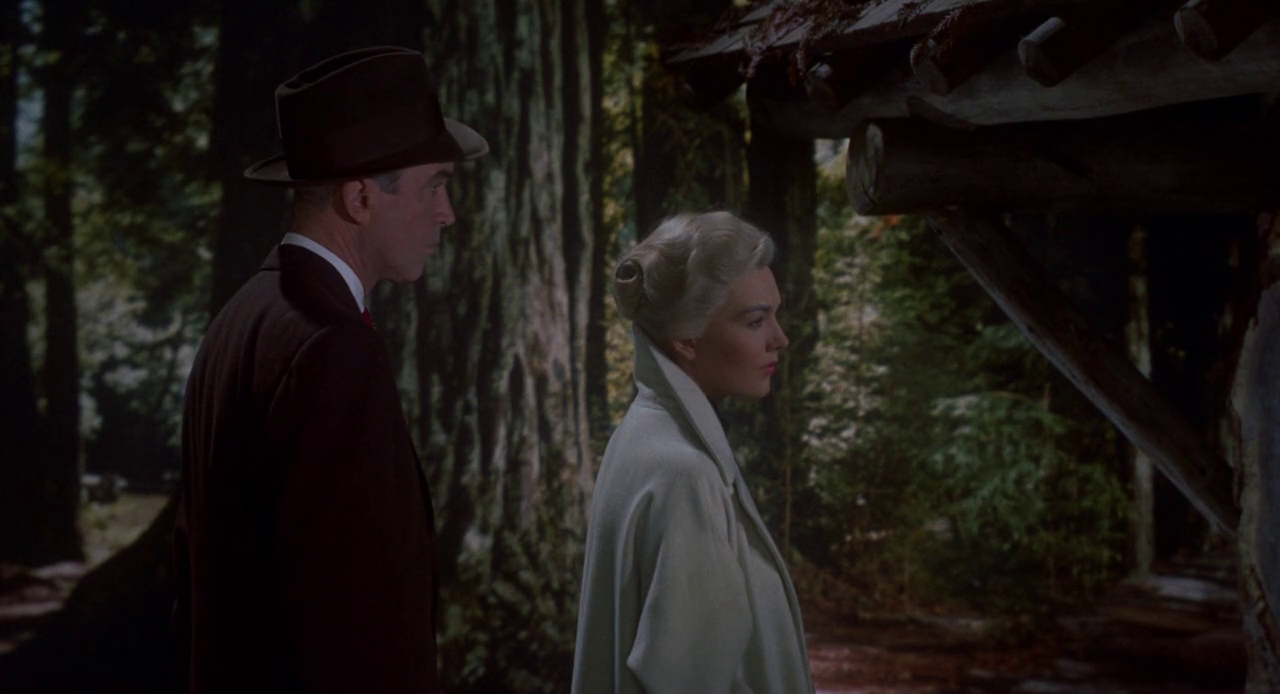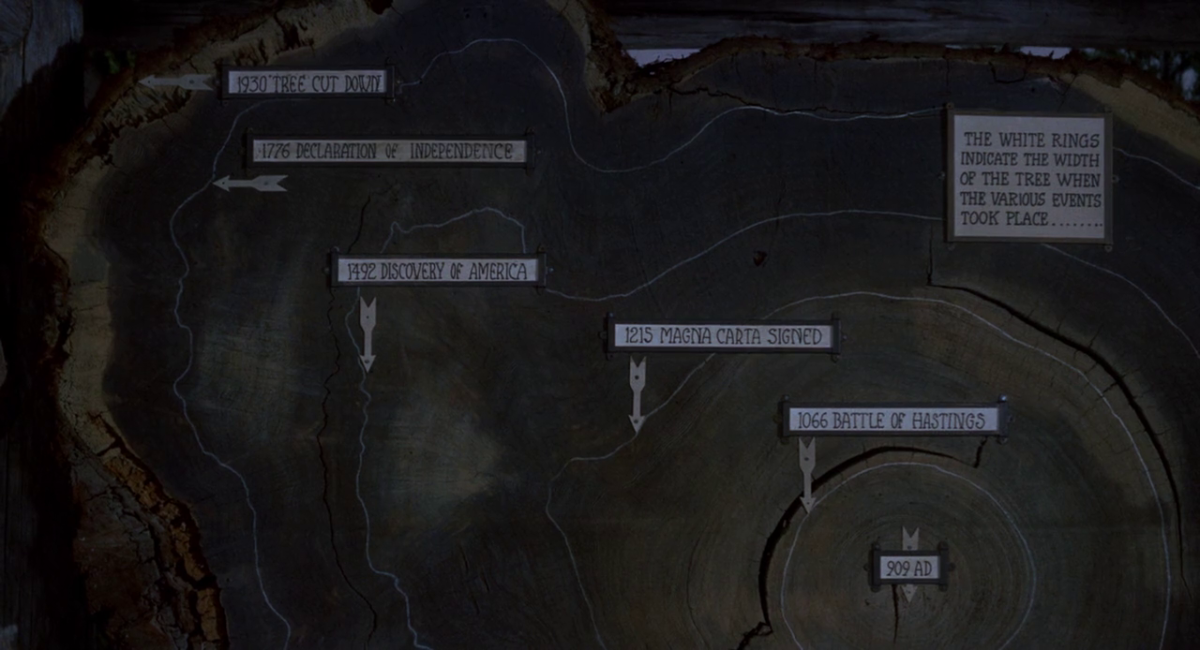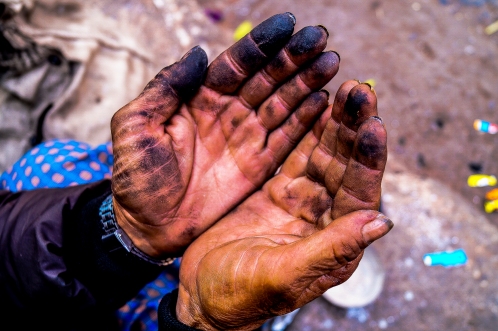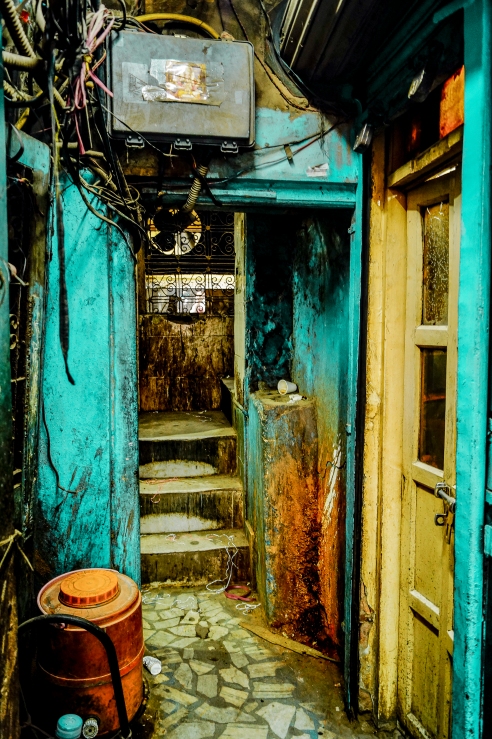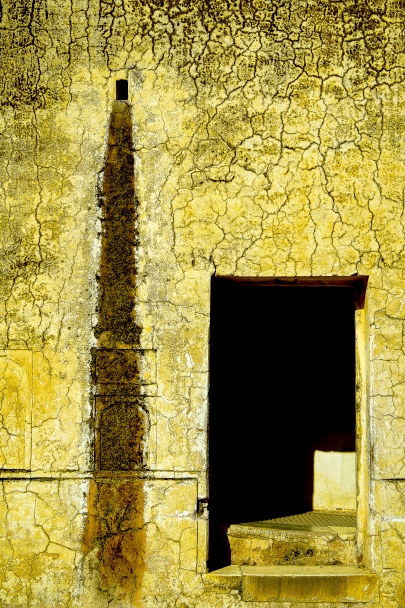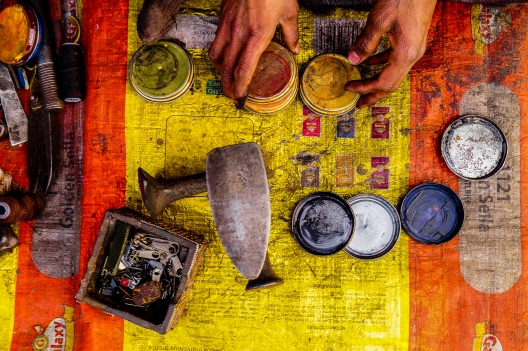The visceral beauty of clay lies not only in its almost poetic organicness but rather in its possibility, the possibility of it becoming anything, any shape or form, any thought or idea and it is this possibility that is molded in the hands of a sculptor, given a shape, a new meaning a new purpose. Clay has no prejudice against you, it has no ego and no memory, it lies there in its unfettered infinite silence being essentially nothing at all and that is why it can be anything, even God.

In India, the sculptures of deities for religious festivals are made of clay, and that often presents itself as a paradox to my understanding because considering the current discourse in the country (if it can be even called a discourse), especially the socio-political and religious discourse, which is turning rapidly unidimensional and rigid, all black and white, there is an evident disconnect between the core material and these idols, the inside, and the outside, these sculptures of faith have turned to sculptures of paradoxes, they have been reduced to mere symbols.
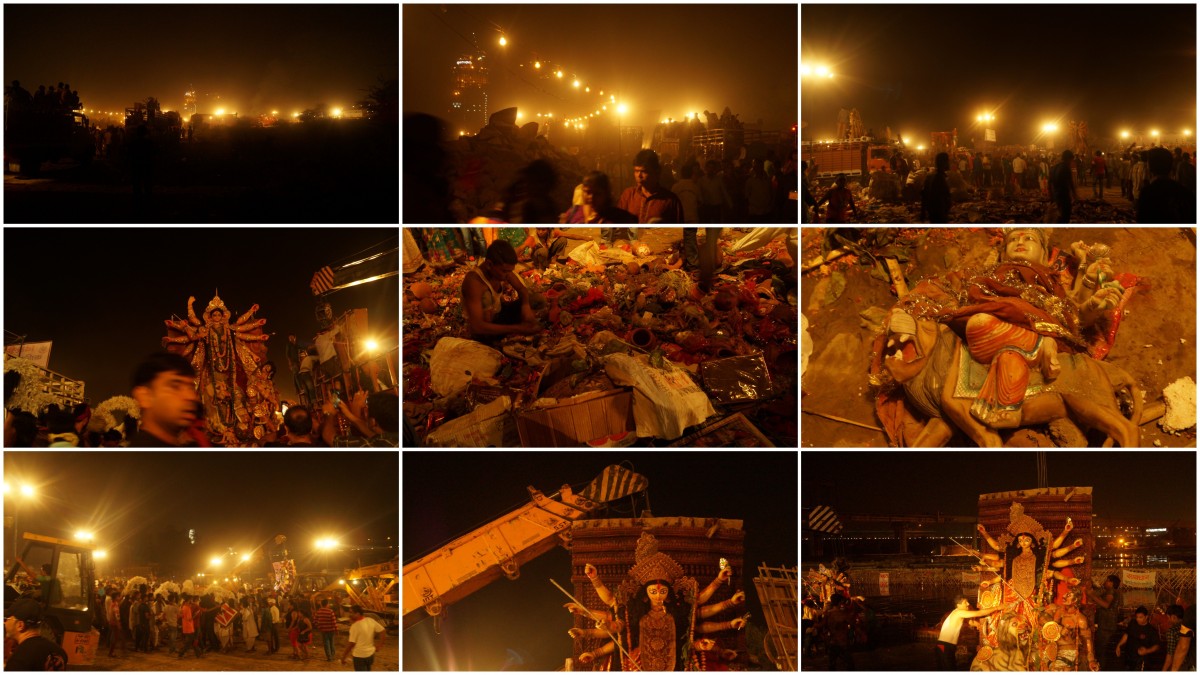
And often looking at these idols especially during the time of immersion, where they end up piling up over each other because of the huge influx, they crash, collide and collapse under the pressure, their features partially melt, waste plastic drapes all over them and their colors smudge together, they look rather alive out of their helplessness, more so because of the meanings associated with them as well as the obvious anthropomorphic form of the idol. Something that was revered for days suddenly lies like a heap of discarded junk, strangely surreal and evidently hypocritical.
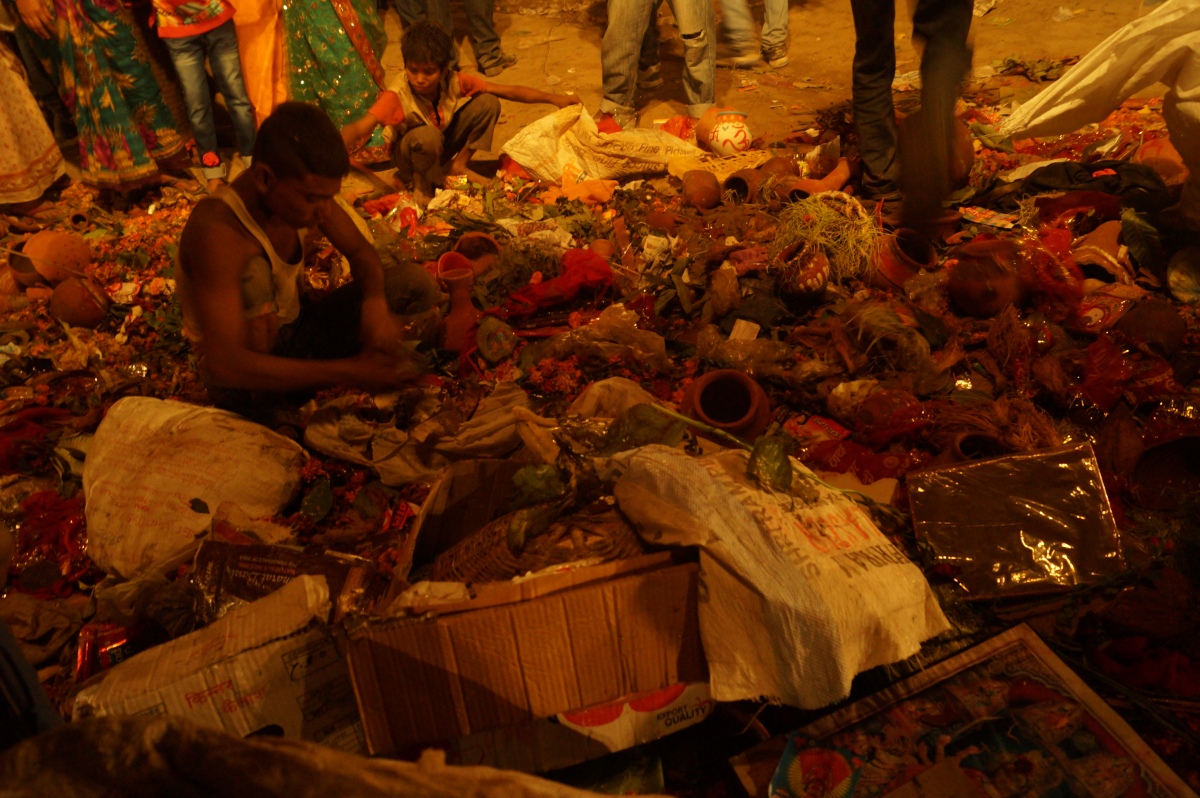
Being an atheist myself, I can arguably say that I enjoy an objective standpoint of religious processions, I never actively participate nor do I despise them, but when I look at the whole ritual of idol immersion, the question I often find myself asking is not one of religion but one of individual faith, of convenience, of hypocrisy, of denial and of creation – Did God create man or man create god.
And the line between the two seems to blur out when you see the process of idol making, where god is created from scratch. Once you visit a makeshift shack of an idol sculptor, it is not that difficult to feel rather bewildered once you see these idols with whom so many emotions and meanings are associated, lying their deconstructed, stacked together like products in a factory. The sculptors I met who have put up their shack at the corner of a busy crossing in NOIDA, say they produce more than 15,000 idols per year, ranging from small, 1’ to 3’, to big ones, which are 5’ to 12’ high. This small enterprise is run by three Bengali sculptors, Bipul, Paritosh and Sunjoy, all belonging to a lineage of idol sculptors, which is quite evident once you see them work together in perfect unison and the swift precision of their hands. They say they feel a deep sense of pride when they see people pray to the idols created by them, however, once you ask them which god they themselves pray to, they say they don’t pray to any god, they pray to mud (matti in Bengali), they revere it as much as a deity, for it provides livelihood.

This shack is not just a place for work it is also the place where they live, once you walk across their shack, you will find some of the discarded or even under construction sculptures being used as hanger for clothes, for placing earphones, the sculptures have infused with their daily paradigm much like a plant growing out of the crevices of concrete. You will also find headless idols, molds of various idols’ heads and also a few dogs taking shelter among the idols.
Sunjoy, the youngest of the three, tells me that he loves to sketch but once he was introduced to sculpting by his father, he found it to be more natural to him and fulfilling. Pointing at the various processes happening, he starts explaining the process of idol making in detail:
The basic armature is made using finely cut pieces of bamboo which are tied together using a rope, then dry grass is used to cover the armature to create the body form of the idol, once the dry grass is tied together and is held firmly using jute rope, a layer of wet clay is smeared uniformly all over the dry grass, once all the moisture has dissipated from the first layer, then another layer is added. Features such as hands, feet and the head that require specific details are made separately and conjoined later.

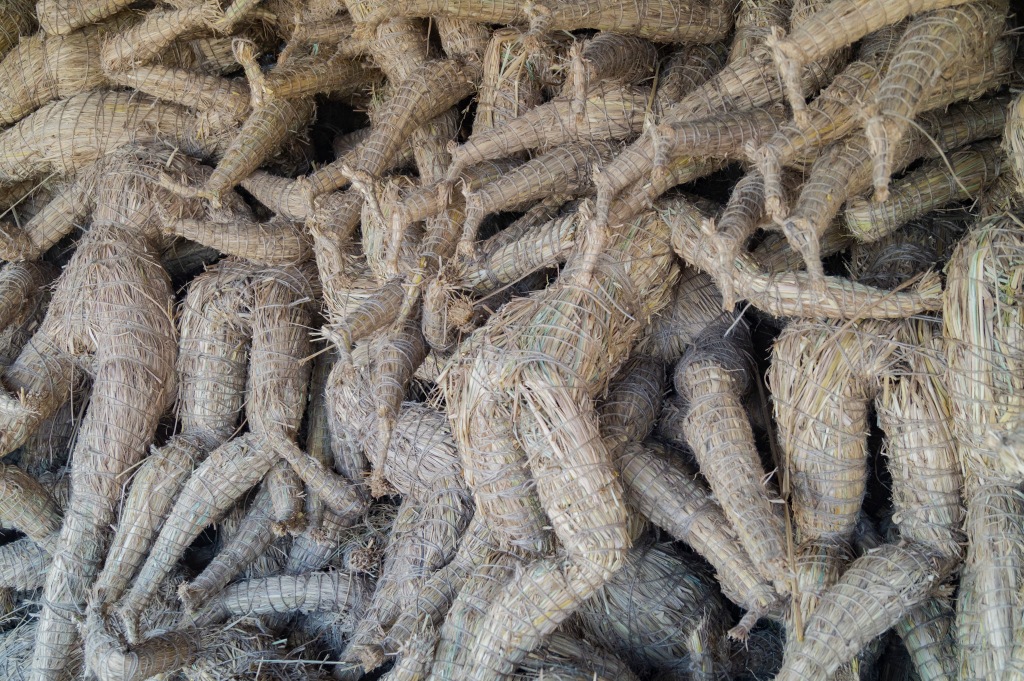

As I sit in a corner, with Sunjoy beside me, neatly preparing bundles of dry grass for the armature, a few feet away, I see Vipul’s hand caressing the clay over a sculpture, Paritosh, sculpting the eyes and ears of a freshly prepared head cast with impeccable precission, I can’t help but wonder about their dedication and their effortless skill, but a part of my thought again drifts into the idea of man, god, and creation. And as I take in all the movement around me, for no tangible reason, I find god as fallible as us, everything as perfect or imperfect as anything else, I find faith slowly becoming amorphous.
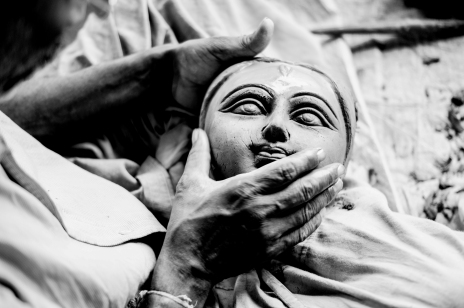
Photos and text by Aadit Basu











